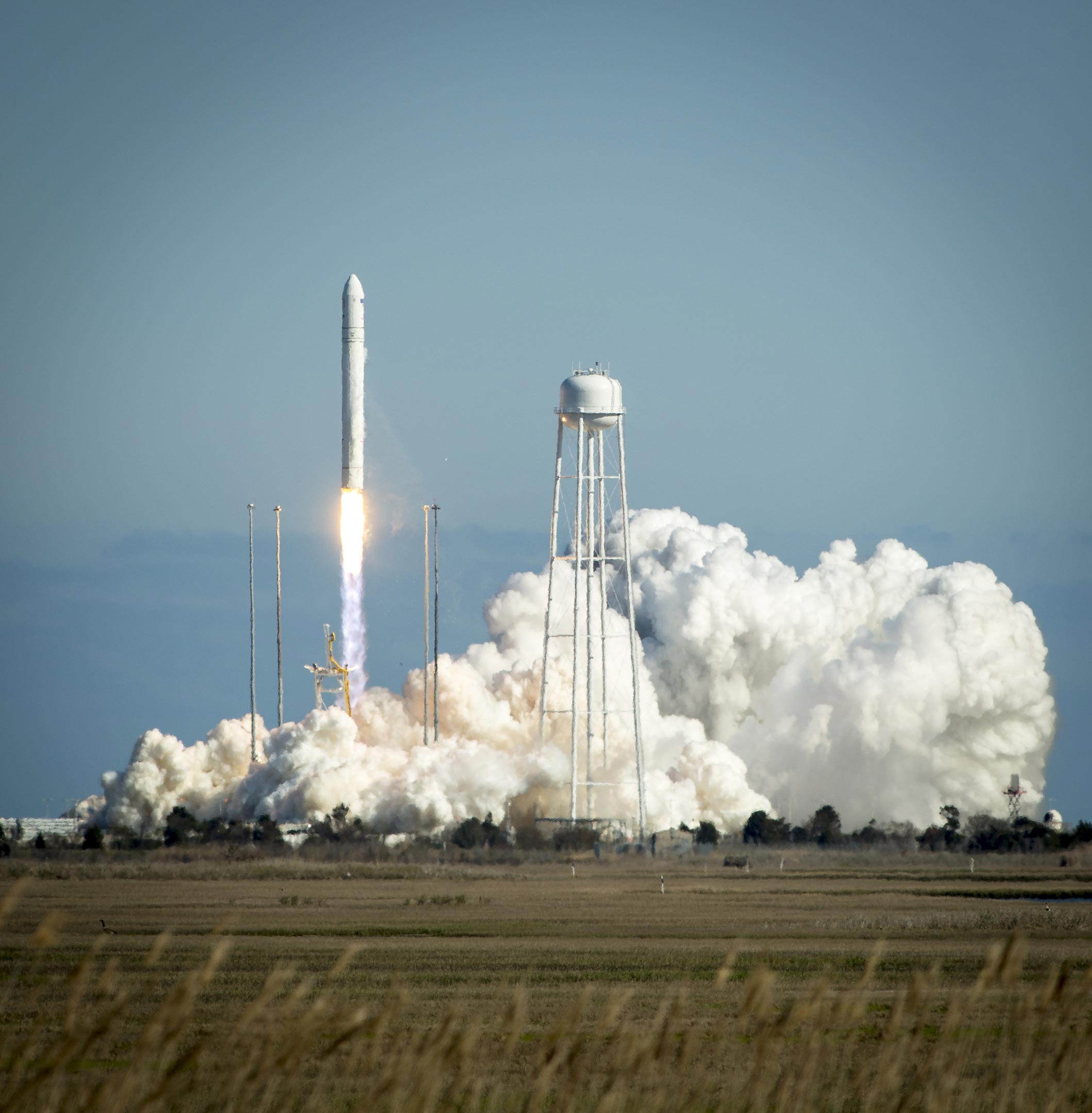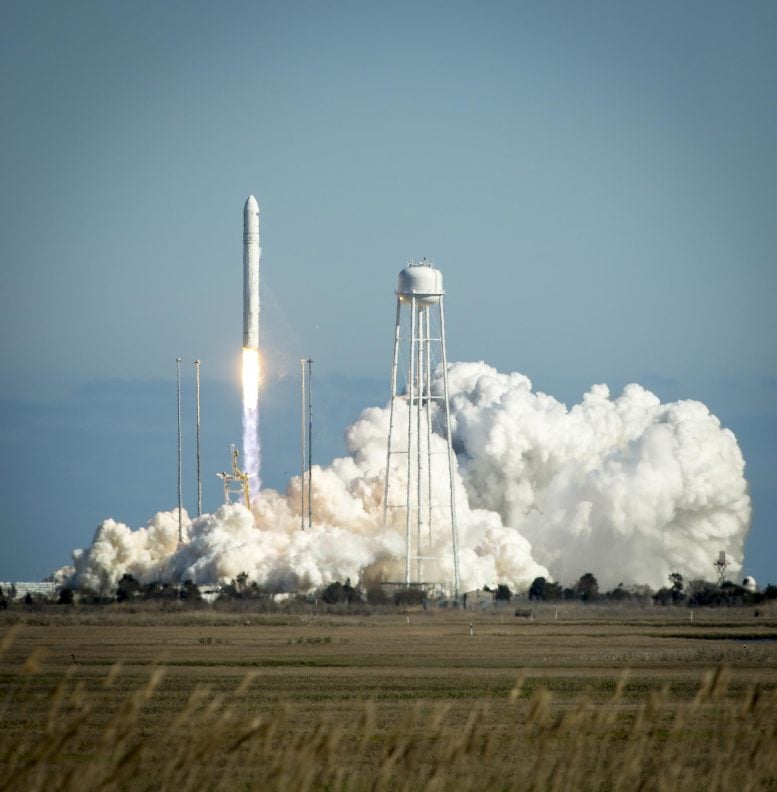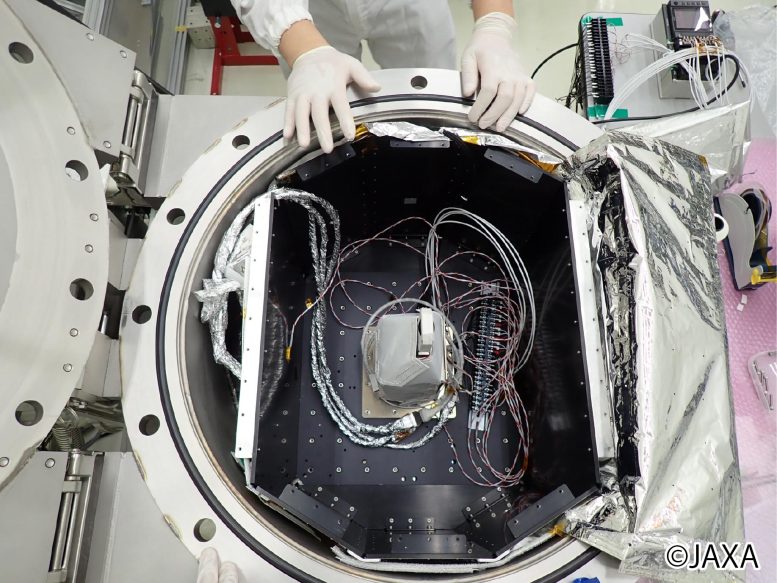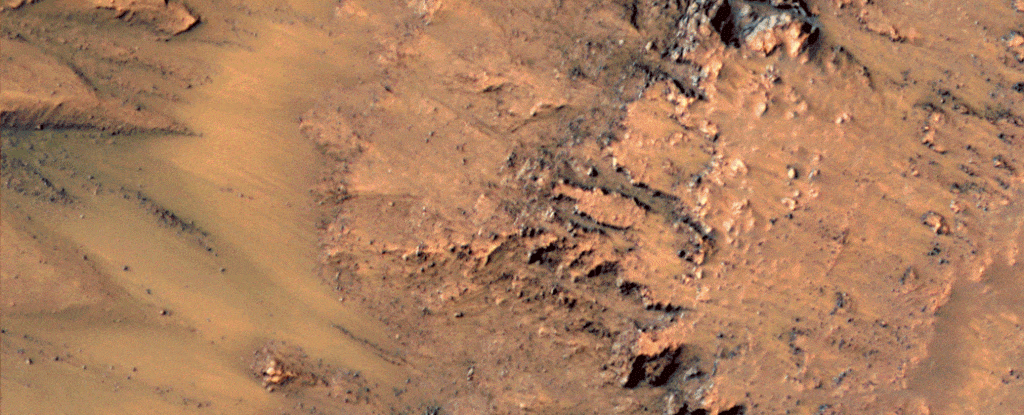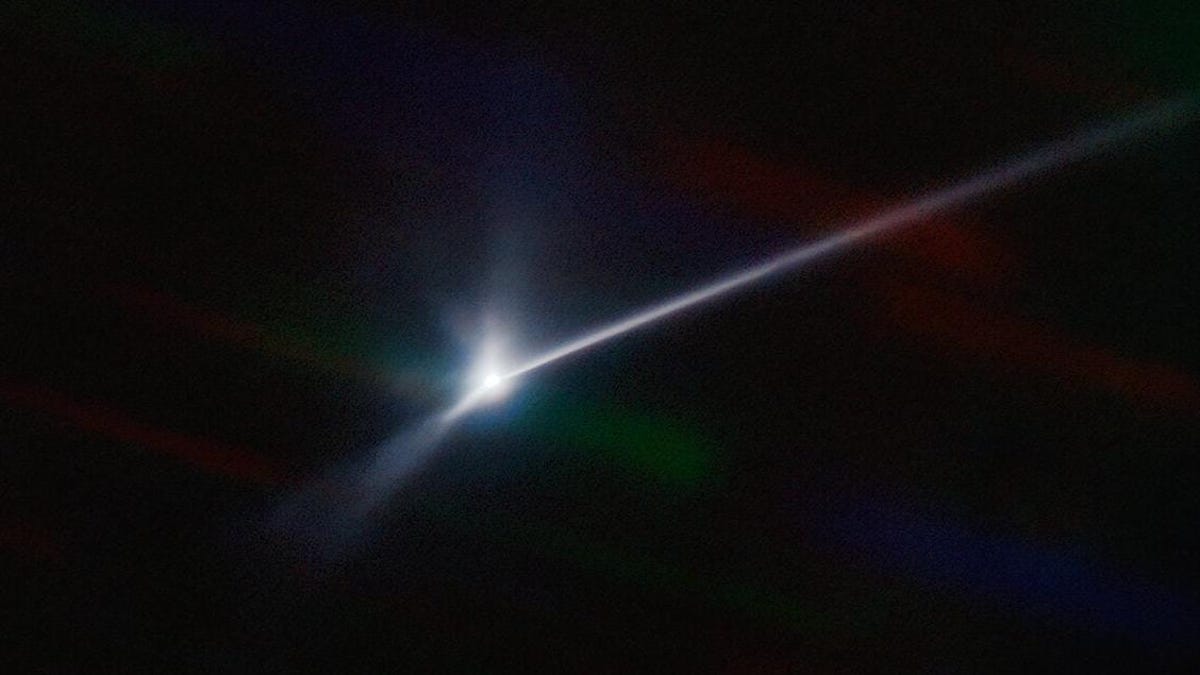تم إطلاق إمداد جديد قدره 8300 رطل من التحقيقات العلمية والبضائع من[{” attribute=””>NASA’s Wallops Flight Facility in Virginia at 12:40 p.m. EST on Saturday, February 19, aboard a Northrop Grumman Cygnus resupply spacecraft, and is now traveling to the International Space Station.
The Cygnus spacecraft, which was launched on an Antares rocket, is scheduled to arrive at the space station around 4:35 a.m. on Monday, February 21. NASA Television, the NASA app, and agency’s website will provide live coverage of the spacecraft’s approach and arrival beginning at 3 a.m.
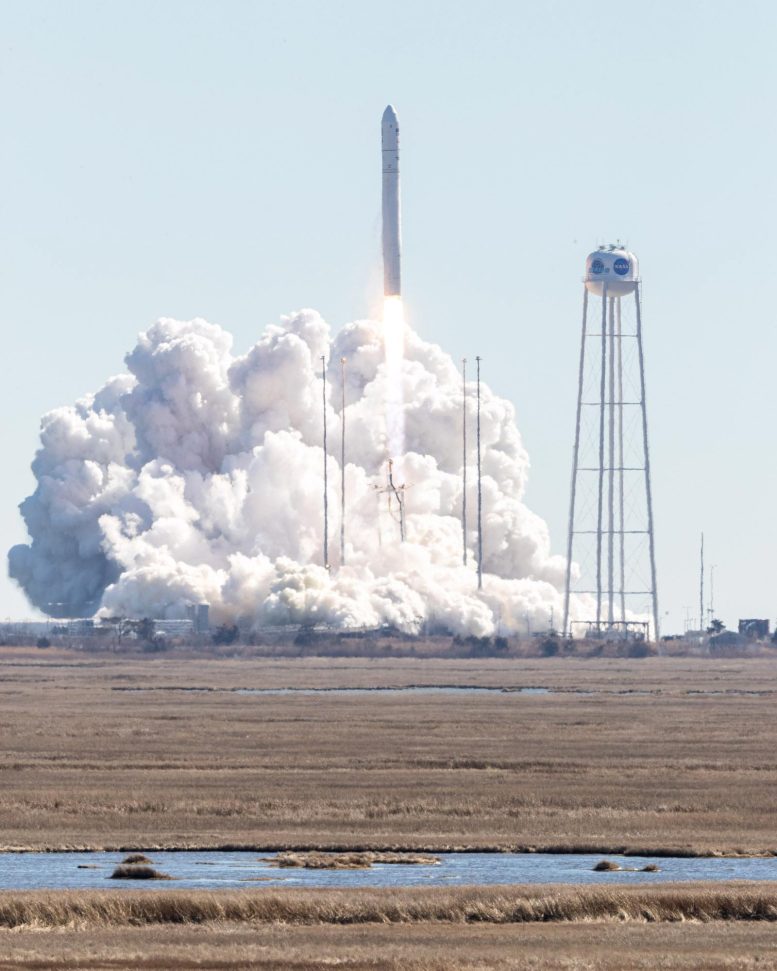
Northrop Grumman’s Antares rocket liftoff from pad 0A at 12:40 p.m. EST from NASA’s Wallops Flight Facility in Virginia, on February 19, 2022. The Cygnus spacecraft, carrying 8,300 pounds of science investigations and cargo, is scheduled to arrive at the space station on Monday, February 21. Credit: NASA Wallops/Allison Stancil
NASA astronauts Raja Chari and Kayla Barron will capture Cygnus with the station’s robotic Canadarm2 upon its arrival. The spacecraft will then be installed on the Earth-facing port of the station’s Unity module.
https://www.youtube.com/watch؟v=3a_A2z1uB7Q
هذه هي مهمة إعادة الإمداد السابعة عشرة المتعاقد عليها لشركة نورثروب جرومان بموجب عقد خدمات إعادة الإمداد التجاري الثاني مع وكالة ناسا. ال توصيل يتضمن مواد مهمة لدعم العشرات من أكثر من 250 تحقيقًا علميًا وبحثيًا تحدث خلال مهمة البعثة 66 التابعة لناسا على متن المحطة الفضائية.
تشمل التحقيقات العلمية التي يحملها Cygnus ما يلي:
حماية بشرتنا
يحدث تدهور أنسجة الجلد ، وهو جزء طبيعي من الشيخوخة ، على مدى عقود. تؤدي الجاذبية الصغرى إلى تغييرات في الجسم مثل الشيخوخة ولكنها تحدث بسرعة أكبر ، لذا يمكن دراستها بسهولة أكبر. شيخوخة البشرة من كولجيت سيقيم التغيرات الخلوية والجزيئية في خلايا الجلد البشرية المهندسة في الجاذبية الصغرى. قد تساعد النتائج في تسريع تطوير المنتجات التي تهدف إلى حماية البشرة من عملية الشيخوخة على الأرض.
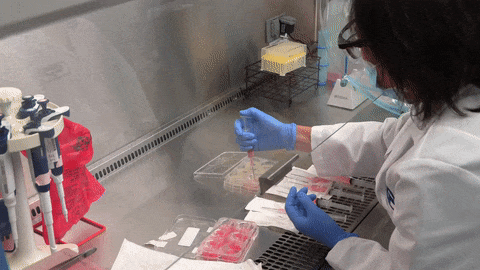
تحضير لوحات زراعة الأنسجة من أجل Colgate Skin Aging ، والتي تقيم التغيرات في خلايا الجلد في الجاذبية الصغرى ويمكن أن تساعد في توفير نموذج لتقييم المنتجات لحماية البشرة من آثار الشيخوخة. الائتمان: كولجيت بالموليف
اختبار أدوية الأورام
ورم MicroQuin 3D سوف يدرس آثار العلاج على خلايا سرطان الثدي والبروستاتا. يمكن أن تنمو هذه الخلايا في نموذج ثلاثي الأبعاد أكثر طبيعية في الجاذبية الصغرى ، مما يجعل من السهل توصيف بنيتها ، والتعبير الجيني ، وإشارات الخلية ، والاستجابة للعلاج. يمكن أن توفر النتائج نظرة ثاقبة جديدة حول بروتين الخلية الذي يستهدفه الدواء والمساعدة في تطوير عقاقير السرطان الأخرى.
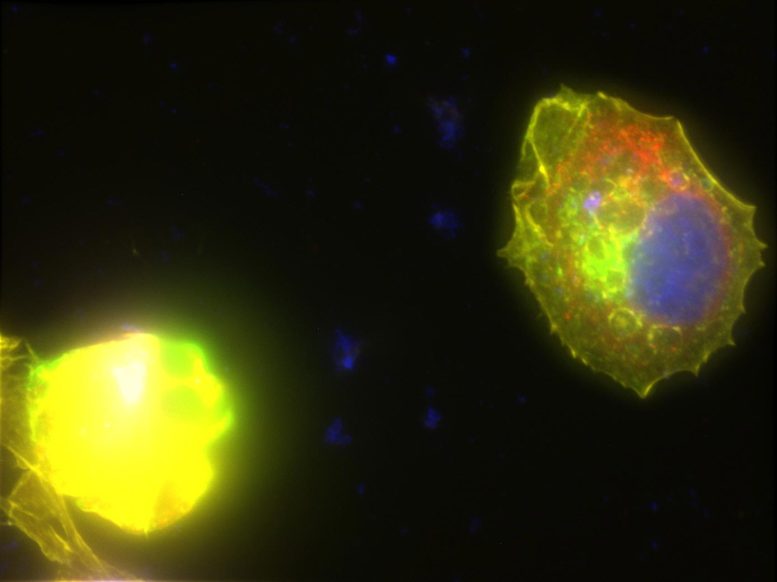
تُظهر هذه الصورة تألق مناعي لخلايا سرطان الثدي التي عولجت بعلاج MicroQuin. يُظهر التلوين نواة طبيعية (زرقاء) والنواة العلاجية (خضراء) مترجمة إلى الشبكة الإندوبلازمية للخلية (أحمر). يجبر الدواء الهيكل الخلوي (الأصفر) على الانهيار ، مما يؤدي إلى موت الخلية. الائتمان: سكوت روبنسون ، MicroQuin
تحسين مجسات الهيدروجين
ال مظاهرة تقنية مستشعر الهيدروجين المتقدمة سيختبر أجهزة استشعار جديدة لنظام توليد الأكسجين بالمحطة الفضائية. تضمن المستشعرات الحالية عدم دخول أي من الهيدروجين إلى أكسجين المقصورة ولكن يمكن أن تكون حساسة للرطوبة والنيتروجين وغيرها من المشكلات التي تتطلب تبديلها كل 201 يومًا. يمكن أن توفر هذه التقنية مستشعرات أكثر متانة للحالات التي لا يكون فيها الاستبدال السريع عمليًا ، مما يقلل من عدد قطع الغيار اللازمة في المهمات الفضائية الأطول مثل القمر أو[{” attribute=””>Mars.
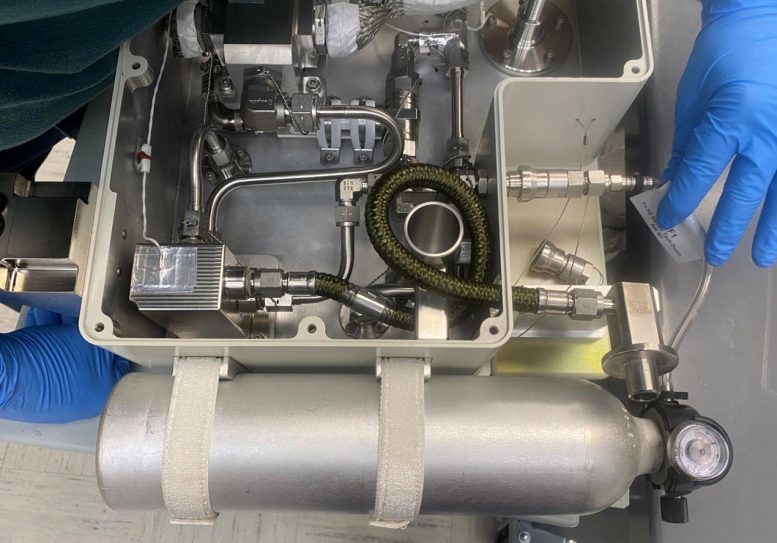
Hardware for the OGA H2 Sensor Demo shown in preparation for flight. This technology demonstration tests new sensors for detecting hydrogen in oxygen generating systems on spacecraft. Credit: NASA’s Marshall Space Flight Center
Better batteries
Space Demonstration for All Solid-State Li Ion Battery (Space As-Lib), an investigation from the Japan Aerospace Exploration Agency, will feature the operation of a lithium-ion secondary battery capable of safe, stable operation under extreme temperatures and in a vacuum environment. The battery uses solid, inorganic, and flame-retardant materials that do not leak, making it safer and more reliable. Results could demonstrate the battery’s performance for various potential uses in space and other planetary environments. Solid-state batteries also have potential applications in harsh environments and the automotive and aerospace industries.
Plants in space
Current systems for growing plants in space use soil or a growth medium. These systems are small and do not scale well in a space environment due to mass, containment, maintenance, and sanitation issues. To address these issues, eXposed Root On-Orbit Test System (XROOTS) will use water- and air-based methods instead, reducing overall system mass. Results could provide insight into the development of larger-scale systems to grow food crops for future space exploration and habitats. Components of the system could also enhance plant cultivation in greenhouses on Earth and contribute to better food security.

Green onion plants grown using aeroponics are held to display their roots. The XROOTS study tests hydroponic (water-based) and aeroponic (air-based) techniques to grow plants in space. Credit: Sierra Space
Improving fire safety
Solid Fuel Ignition and Extinction (SoFIE) will enable studies of the flammability of materials and ignition of fires in realistic atmospheric conditions. This facility uses the Combustion Integrated Rack (CIR), which allows for testing at different oxygen concentrations and pressures that represent current and planned space exploration missions. Gravity influences flames on Earth, but in microgravity, fire acts differently and can behave in unexpected ways aboard the space station. Some evidence suggests that fires may be more hazardous in reduced gravity. Results could help ensure crew safety by improving design of extravehicular activity suits, and cabin materials, improve our ability to determine the best techniques for suppressing fires in space.
Findings from these and other investigations aboard the space station will contribute to keeping astronauts healthy during long-duration space travel and demonstrate technologies for future human and robotic exploration missions as part of NASA’s Moon and Mars efforts, including lunar missions through the agency’s Artemis program.
Cygnus will also deliver critical hardware to be installed during the upcoming ISS Roll-Out Solar Array (IROSA) spacewalks, as well as other components for the successful functioning of astronaut life on the space station, such as a trash deployer and acoustic covers for the waste management system.
This Cygnus mission is the first to feature enhanced capabilities that will allow the spacecraft to perform a reboost, using its engines to adjust the space station’s orbit as a standard service for NASA. The agency has one reboost is planned while Cygnus is connected to the orbiting laboratory. A test of the maneuver was performed in 2018 during Cygnus’ ninth resupply mission.
Cygnus will remain at the space station until May before it deploys CubeSats, then disposes of several thousand pounds of trash during its re-entry into Earth’s atmosphere, which will result in its destruction.

“هواة الإنترنت المتواضعين بشكل يثير الغضب. مثيري الشغب فخور. عاشق الويب. رجل أعمال. محامي الموسيقى الحائز على جوائز.”

